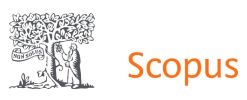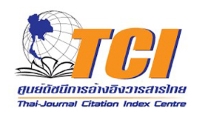JOURNAL DETAIL
Removal of Organophosphorus Pesticide Residues in Leaf and Non-leaf Vegetables by Using Ozone Water
Paper Type |
Contributed Paper |
Title |
Removal of Organophosphorus Pesticide Residues in Leaf and Non-leaf Vegetables by Using Ozone Water |
Author |
Surat Hongsibsong and Ratana Sapbamrer |
Email |
lekratana56@yahoo.com; lekratana56@gmail.com |
|
Abstract: Organophosphorus (OPs) pesticides are the most widely used in the group of insecticides to control pests on vegetables and fruits. OPs were detected in vegetables of Thailand exceeding the maximum residue limits (MRL). Therefore, the study aims to investigate percentage removal of OPs residues at the difference of ozone levels (600 mg/h and 1,000 mg/h) and the contact times (20, 30, and 40 min) in leaf and non-leaf vegetables. Five types of leaf vegetables were Chinese cabbage, lettuce, kale, parsley and Vietnamese coriander. Five types of non-leaf vegetables were ginger, cucumber, cowpea, broccoli and onion. The results were found that the difference of ozone levels and the contact times had an effect on efficiency of OPs removal in lettuce, kale, and cowpea. the Considering average percentage of OPs removal in average contact times of 20-40 min, ozone levels at 1,000 mg/h had the highest percentage of OPs removal in an average of 65.1±12.4% for leaf vegetables and 78.4±15.6% for non-leaf vegetables. It can be concluded that the effectiveness of OPs removal in vegetables by using ozone depended on the chemical structure of OPs residues in vegetables, levels and contact times of ozone and matrix of vegetables. |
|
Start & End Page |
1759 - 1769 |
Received Date |
2017-03-15 |
Revised Date |
|
Accepted Date |
2017-04-04 |
Full Text |
Download |
Keyword |
organophosphorus, ozone, vegetables, pesticides |
Volume |
Vol.45 No.4 (July 2018) |
DOI |
|
Citation |
Hongsibsong S. and Sapbamrer R., Removal of Organophosphorus Pesticide Residues in Leaf and Non-leaf Vegetables by Using Ozone Water, Chiang Mai Journal of Science, 2018; 45(4): 1759-1769. |
| View:878 Download:309 | |
RELATED ARTICLE
Article ID: e2023075
Author:Fatimah Alshahrani, Omar Fetitah, Ibrahim M. Almanjahie and Mohammed Kadi Attouch
Vol.50 No.6 (November 2023) View: 1,360 Download:562
page: 511 - 523
Author:Mona Zayed M. Alamer, Omar Fetitah, Ibrahim M. Almanjahie and Mohammed Kadi Attouch
Vol.49 No.2 (March 2022) View: 1,510 Download:406
page: 1173 - 1185
Author:Ibrahim M. Almanjahie, Zoulikha Kaid, Zouaoui Chikr Elmezouar and Ali Laksaci
Vol.48 No.4 (July 2021) View: 943 Download:270
page: 969 - 978
Author:Lim Shu Fang, Kivaandra Dayaa Rao Ramarao, Zuliana Razali and Chandran Somasundram
Vol.48 No.4 (July 2021) View: 1,596 Download:501
page: 1297 - 1309
Author:Ahmad Fauzi Raffee, Hazrul Abdul Hamid*, Siti Nazahiyah Rahmat and Muhammad Ismail Jaffar
Vol.47 No.6 (November 2020) View: 1,034 Download:393
page: 308 - 321
Author:Kanokwan Chaiyasing, Boonsom Liawruangrath, Surapol Natakankitkul, Sakchai Satienperakul, Wasan Sirisungworawong, Narabhats Rannurags and Saisunee Liawruangrath*
Vol.46 No.2 (March 2019) View: 2,021 Download:243
page: 1933 - 1943
Author:Watcharapol Polyiem, Warangkana Naksen and Tippawan Prapamontol
Vol.45 No.4 (July 2018) View: 1,267 Download:320
page: 1113 - 1126
Author:Muhammad Khan, Li Tiehu, Aqeel A. Khurram, Ting Kai Zhao, Chuanyin Xiong, Zafar Ali, Turab Ali Abb
Vol.44 No.3 (July 2017) View: 857 Download:277
page: 657 - 668
Author:Trakul Prommajak, Sang Moo Kim, Cheol-Ho Pan, Sang Min Kim, Suthat Surawang, Nithiya
Vol.42 No.3 (JULY 2015) View: 984 Download:324
page: 681 - 690
Author:Buran Phansawan, Tippawan Prapamontol, Prasak Thavonyutikarn, Somporn Chantara,
Vol.42 No.3 (JULY 2015) View: 992 Download:470
page: 560 - 571
Author:Asmita Dutta and Mukesh Singh
Vol.38 No.4 (OCTOBER 2011) View: 932 Download:396
page: 1 - 5
Author:Anchana Chanwitheesuk, Nuansri Rakariyatham*, Aphiwat Teerawutgulrag and Teerapol Wongchanapiboon
Vol.29 No.1 (APRIL 2002) View: 1,090 Download:343
Copyrights © Since 2021 All Rights Reserved by Chiang Mai Journal of Science










